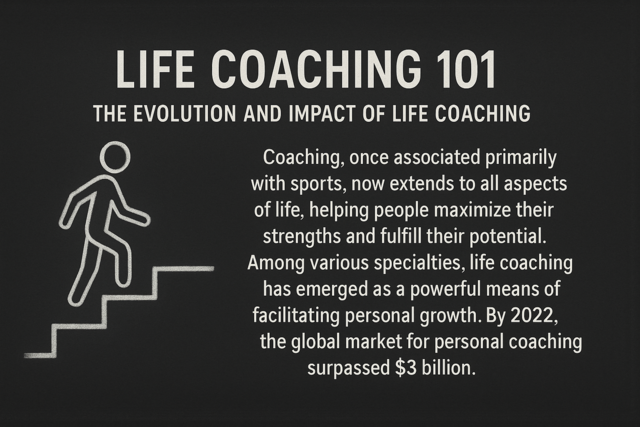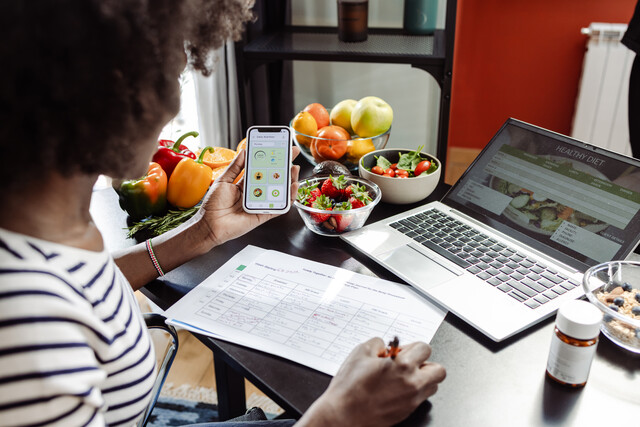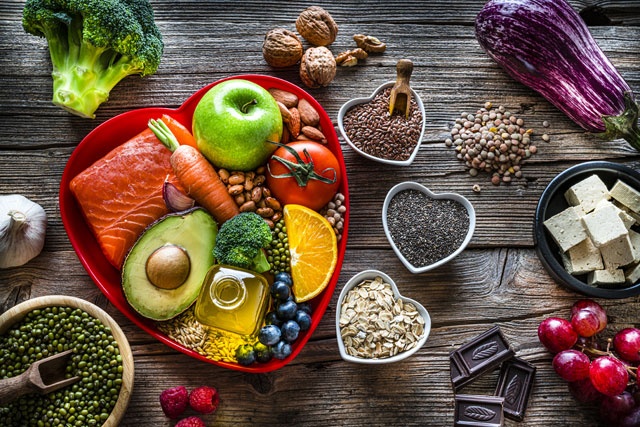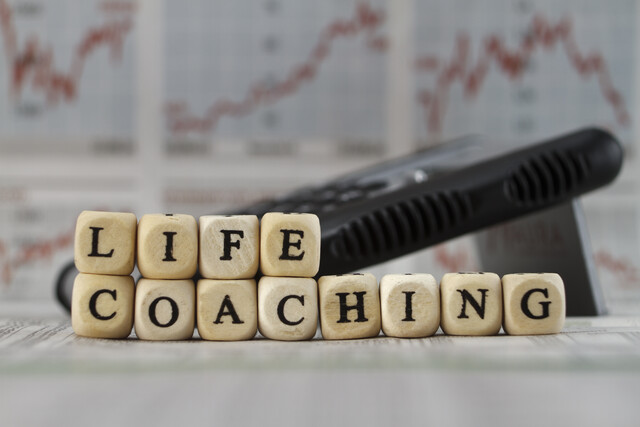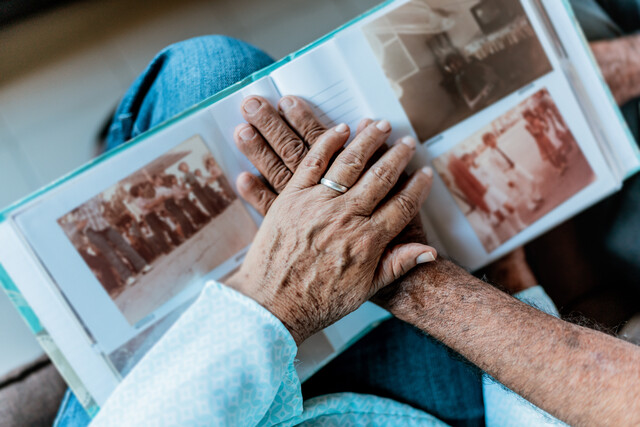Every elite athlete understands the importance of appropriate nutrition. Unfortunately, most casual athletes are less comfortable with the idea of food as a performance fuel. Too often, we tend to think, "I lifted weights for 20 minutes and ran on the treadmill for half an hour, and so I can afford to stop for a drive-through burger and extra large fries on the way home."
Most of us will never reach elite athlete status, but we are all affected by the same nutritional principles: to perform at our personal best level, to feel our best and look our best, we have to think of every snack or meal as a fueling opportunity. If you really want to perform better as an athlete (or to lose weight), take a close look at everything you eat and ask what it is bringing to the nutritional table.
Food as fuel for exercise
Fats help you feel full, they can be used for fuel, they carry fat-soluble vitamins, and they are essential for hormone production, but you should limit your daily fat intake to about 25% of calories.
Micronutrients, the vitamins and minerals in your diet, fight off oxidative damage, keep your immune system strong, help you metabolize food energy, and act as catalysts in thousands of chemical reactions inside your body.
If you are lacking in key nutrients, your performance, appearance, and general health are at risk.
Attitude shift
Instead of thinking, "I can afford these French fries because I just burned 250 calories on the treadmill," think, "What fuel do I need to provide my body to replace the nutrients I just burned during exercise?" Look for nutrient-rich foods that will replace spent carbohydrates and proteins along with a reasonable amount of healthy fats. Choose vegetables, whole grains, and lean proteins, and avoid added sugar and anything that came out of a deep fat fryer.
Eat early and often
Eat every few hours. If you think about the traditional three meal model, people eat large amounts of food every 3-4 hours throughout the day. The problem with this model, or with eating just once or twice a day, is that you tend to get so hungry between meals that you are likely to overcompensate at mealtime and eat too much food at once.
A better approach is to divide a day's supply of food among several small meals timed about 2 hours apart during the time you are awake. The advantage to this approach for athletes is that you can swim, run, or bike after eating a handful of almonds and a glass of milk, but it's a lot harder after a 12-oz steak.
The more frequently you eat, the less likely you are to get desperately hungry and make poor food choices, like stopping at the late night drive-through for French fries and milkshakes after your workout.
There are two caution points with the frequent-fueling plan.
-
You have to plan ahead.
-
You have to focus on several tiny meals, not multiple large ones.
When you head out to work in the morning, pack a cooler with healthy snacks to keep you going throughout the day. Plain (not salted or sugared) nuts, hard-boiled eggs, packets of instant oatmeal, whole grain crackers, low-fat cheese slices, low-fat yogurt, bananas, apples, carrots, and hummus are all handy snacks to stock in your daily cooler.
All of your little mini-meals should total no more than your daily caloric goal. You don't have to track every molecule you eat, but it's a good idea to check nutrition labels to get an idea of appropriate serving sizes and calorie counts. Each mini-meal should be filling enough to keep you going, but not so hearty that you feel like falling asleep, and the idea of taking a brisk walk around the block makes your stomach curdle in anticipation.
For athletes, food timing is particularly important. You won't be able to perform at an optimal level if you are super hungry and carbohydrate depleted. Your body needs its preferred form of fuel, or you will feel sluggish and slow, and your brain will have a hard time making important decisions quickly. Eventually, your body will start to break down the protein in your muscles to compensate for the lack of carbohydrates.
If you exercise for less than an hour, you probably don't need to spend a lot of effort planning your pre-workout meal, because you will probably have enough glycogen (easily accessed energy) circulating in your blood and stored in your liver to keep you going for that period of time, unless if you exercise first thing in the morning and you woke up very hungry. If your activity lasts longer than one hour, like a marathon, or a daylong dance workshop, you should plan to eat a low-fiber, easy-to-digest snack an hour before or more before you work out. (Do not go high-fiber or high fat before your workout, as these foods take longer to digest, and will strain your system when you start to exercise, resulting in gas, bloating, and abdominal discomfort).
Good pre-workout snacks:
-
100% Fruit juice.
-
Bagel.
-
Banana.
Make sure you drink a glass or two of water in the hour before your workout, but don't chug a glass right before you start an intense workout. Sip slowly unless you enjoy the feeling of water sloshing when you move.
In a longer bout of physical activity, like the marathon or a daylong event, you should plan some simple, easily digestible snacks. If your long-term event provides breaks, like a series of basketball games in one day, where you might have an hour-long break, choose easily digestible carbohydrate snacks like fresh fruit, pretzels, juice, or milk, and drink plenty of water. If your long event doesn't allow a break (like a marathon) you might want to try a commercially packaged snack designed for this purpose, like a gel for marathoners.
Fueling after your workout helps your body reset for the next round of exercise, restore the glucose levels in your blood, repair muscle damage, and develop new muscle fiber in response to exercise. The window of opportunity for optimal refueling is pretty short. Some experts think the best time to eat a post-workout carb and protein snack is about 30 minutes after the end of your workout. This is another great time to have a carb-protein snack packed and ready to go so that you don't get sucked into buying overpriced and additive enhanced shakes at the gym
Post-workout snack ideas (carbs + proteins).
-
Milk (regular, soy, or almond).
-
Yogurt and banana.
-
Peanut butter on whole wheat crackers.
-
Cheese and Triscuits.
Of course, every post-workout snack should include plenty of fluids to replenish sweat loss. If it's hot outside during your workout, you might want to choose a salty post-workout snack to help replace sodium lost from sweating. This doesn't mean you need to douse a pack of fries with salt, simply choose something like pretzels, or cheese and Triscuits (both contain salt).
Recommendations differ on the exact amounts of which type of food to eat, but in general, both aerobic and strength training athletes should get about 60% of their calories from carbohydrates, 15% from protein, and 25% from fat, or, if you prefer, about 0.5 to 0.8 grams of protein per pound of body weight per day. If you are eating your recommended amount of calories per day from regular food sources, you should not need to eat extra protein supplements or energy bars.
Cost effective fueling
People often argue that healthy eating is too expensive. Although low-nutrient, high-fat food tends to be less expensive in the short term, the costs do add up over the long term in the form of illness and chronic disease.
With some prior planning and forethought, and if you don't buy into unsupported health claims made by commercial organizations that want you to buy their products, you can manage the cost of eating well.
-
Cook more of your own meals. You have more control over the nutritional profile of your food when you make it yourself, and it is generally less expensive than a similar restaurant-prepared item.
-
Buy produce in bulk. At the grocery store, choose pre-bagged apples, oranges, onions, and lemons. These are generally less expensive than their individually sold counterparts.
-
Make it a goal to consume all the fruit and vegetables you buy before they go bad.
-
Plan ahead. Plan your meals ahead and take advantage of opportunities to make leftovers into a second or third meal.
-
Buy food as close to its natural form as possible.
Muscle cramps, salt, and water
Over an extended workout, you might experience muscle cramping in the major muscle groups your activity uses the most, like calves for runners and dancers. This is sometimes the result of dehydration and electrolyte loss, especially if you are a profuse and "salty" sweater (if you get a salty crust on your skin or clothing after a workout, then you are a salty sweater). To help avoid muscle cramping, drink more fluids and increase your salt intake before, during, and after your workout by choosing some mildly salty snacks like pretzels, or cheese and crackers.
Carb loading



